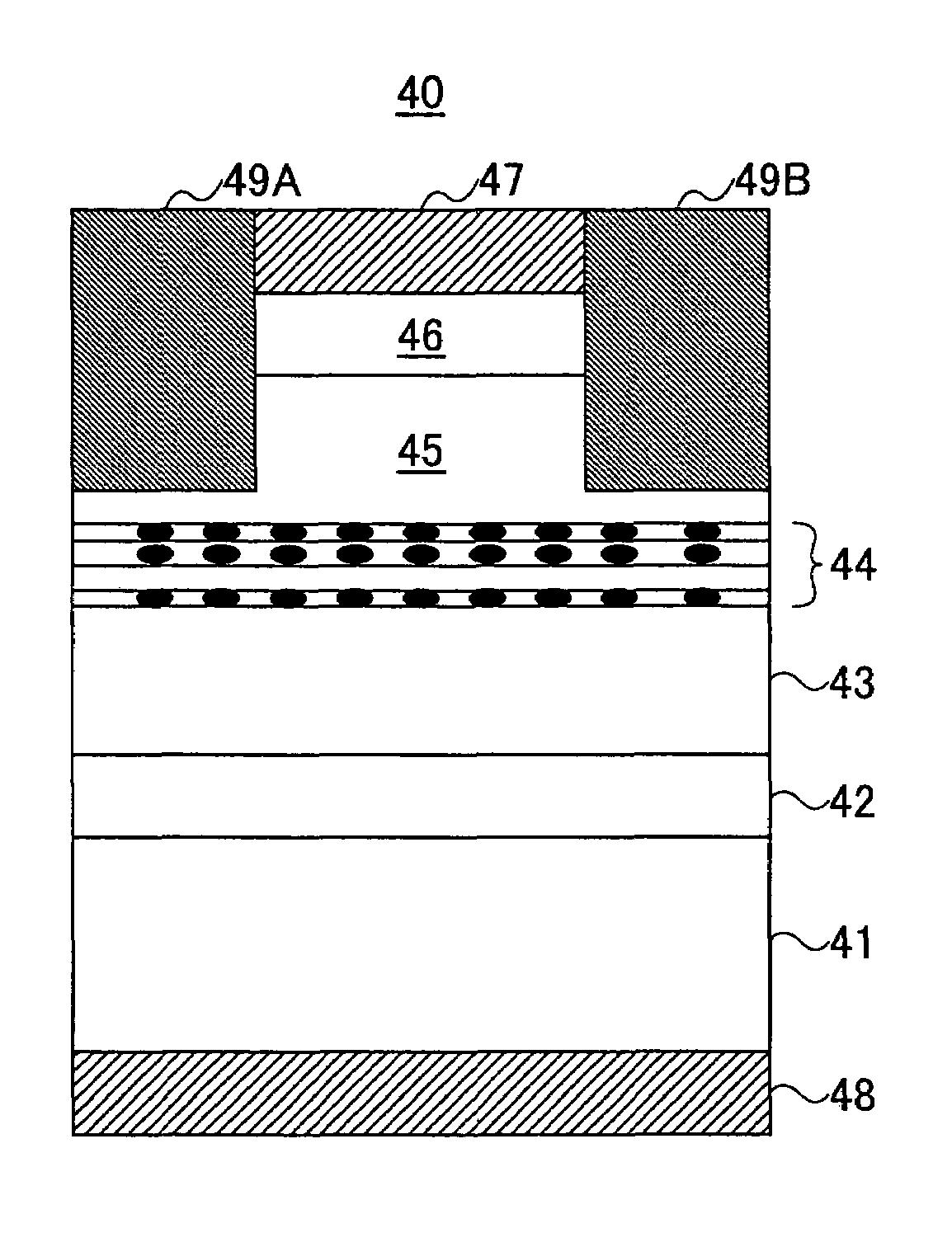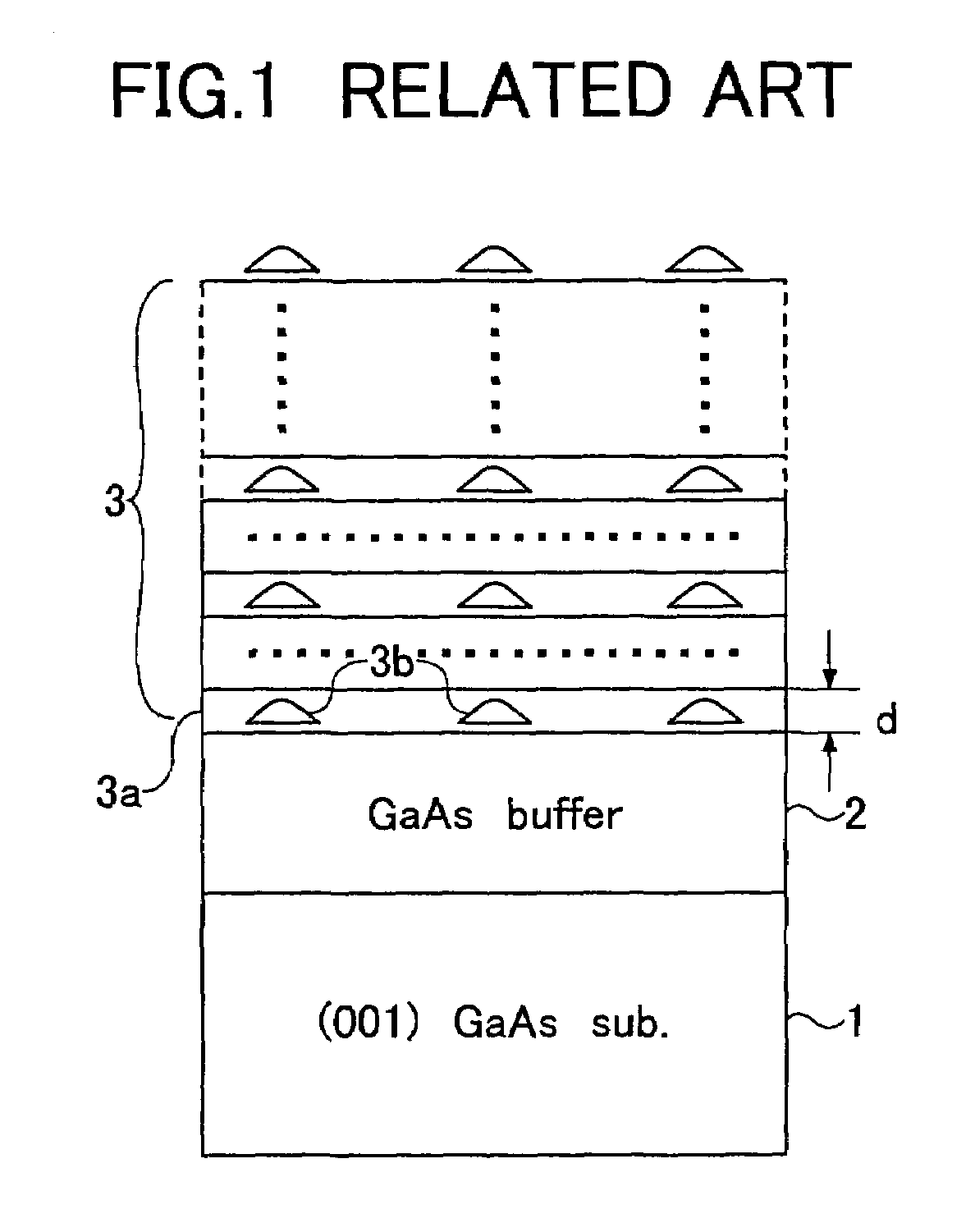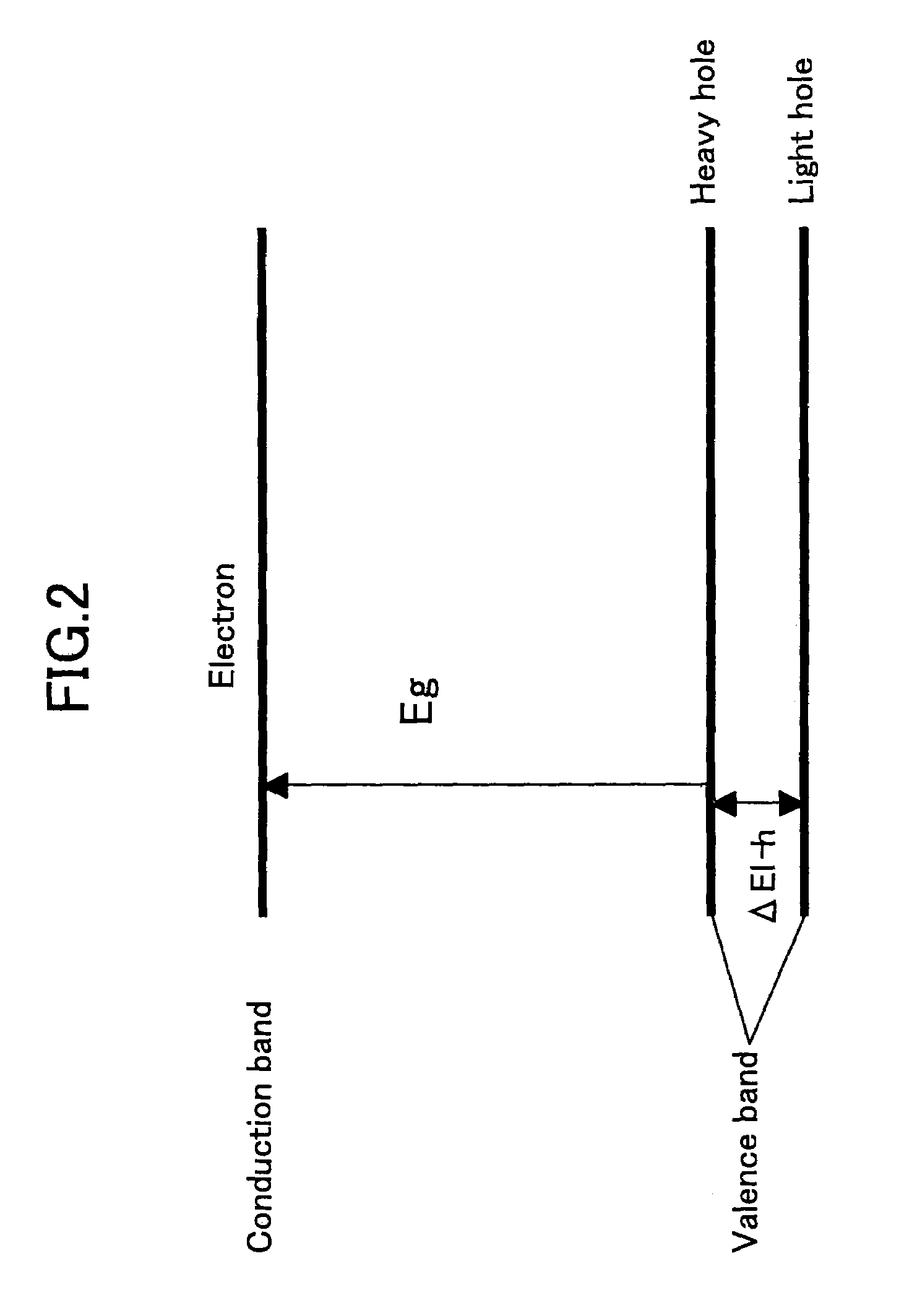Quantum optical semiconductor device
a quantum dot and optical semiconductor technology, applied in the field of semiconductor devices, can solve the problems of quantum dot substantial damage, difficult control of steps on such a substrate surface, and extrapolation of conventional processes
- Summary
- Abstract
- Description
- Claims
- Application Information
AI Technical Summary
Benefits of technology
Problems solved by technology
Method used
Image
Examples
first embodiment
[First Embodiment]
[0076]FIG. 3 shows the construction of a quantum optical semiconductor device 10 according to a first embodiment of the present invention.
[0077]Referring to FIG. 3, a GaAs buffer layer 12 is formed on a GaAs substrate 11 having a (100)-surface orientation, and an InAs layer is formed on the GaAs buffer layer 12 by an MOVPE process at a substrate temperature of 510° C. with a source supply rate set such that there is formed an InAs layer with a thickness of about 1.8 molecular layers.
[0078]It should be noted that the InAs layer thus formed experiences compressive strain due to the fact that the lattice constant of InAs crystal is larger than the lattice constant of the GaAs substrate, and as a result, there are formed islands of InAs quantum dots 13 on the GaAs buffer layer 12 as a result of the S-K mode growth. Thereby, the InAs quantum dots 13 form a strained heteroepitaxial system together with the underlying GaAs buffer layer 12. It should be noted that such InA...
second embodiment
[Second Embodiment]
[0087]FIG. 5 shows the construction of a quantum optical semiconductor device 20 according to a second embodiment of the present invention.
[0088]Referring to FIG. 5, the quantum optical semiconductor device 20 is constructed on a GaAs substrate of (100)-surface orientation and covered with a buffer layer 22 of GaAs or AlGaAs, wherein the quantum optical semiconductor device 20 further includes a number of InAs quantum dots 23 formed on the buffer layer 22 by an S-K mode growth conducted by using an MOVPE process.
[0089]On the surface on which the S-K growth of the InAs quantum dots 23 occurs, it can be seen that there is formed an extremely thin InAs wetting layer 23a. While not illustrated, a similar wetting layer is used also in the embodiment of FIG. 3.
[0090]In the present embodiment, the InAs quantum dots 23 can be formed by supplying source gases at the substrate temperature of 510° C., for example, with a supply rate set such that there is caused a growth of ...
third embodiment
[Third Embodiment]
[0098]FIG. 8 shows the construction of a quantum semiconductor device 30 according to a third embodiment of the present invention.
[0099]Referring to FIG. 8, there is formed an InGaAsP barrier layer 32 on an InP substrate 31 having a (100) or (311)B surface orientation via an InP buffer layer not illustrated, and quantum dots 33 of undoped InGaAs or InAs are formed on the InGaAsP barrier layer 32 by an S-K growth process that uses an MOVPE process conducted at the substrate temperature of 450–550° C. As a result of such an S-K growth process, there is formed an extremely thin wetting layer 33A on the surface of the InGaAsP barrier layer 32.
[0100]Further, the quantum dots 33 are buried by another InGaAsP barrier layer 34 having a composition different from the composition of the InGaAsP barrier layer 32, wherein the barrier layer 32 including therein the quantum dots 33 and the barrier layer 34 are deposited alternately and repeatedly for about 10 cycles. Thereby, th...
PUM
 Login to View More
Login to View More Abstract
Description
Claims
Application Information
 Login to View More
Login to View More - R&D
- Intellectual Property
- Life Sciences
- Materials
- Tech Scout
- Unparalleled Data Quality
- Higher Quality Content
- 60% Fewer Hallucinations
Browse by: Latest US Patents, China's latest patents, Technical Efficacy Thesaurus, Application Domain, Technology Topic, Popular Technical Reports.
© 2025 PatSnap. All rights reserved.Legal|Privacy policy|Modern Slavery Act Transparency Statement|Sitemap|About US| Contact US: help@patsnap.com



